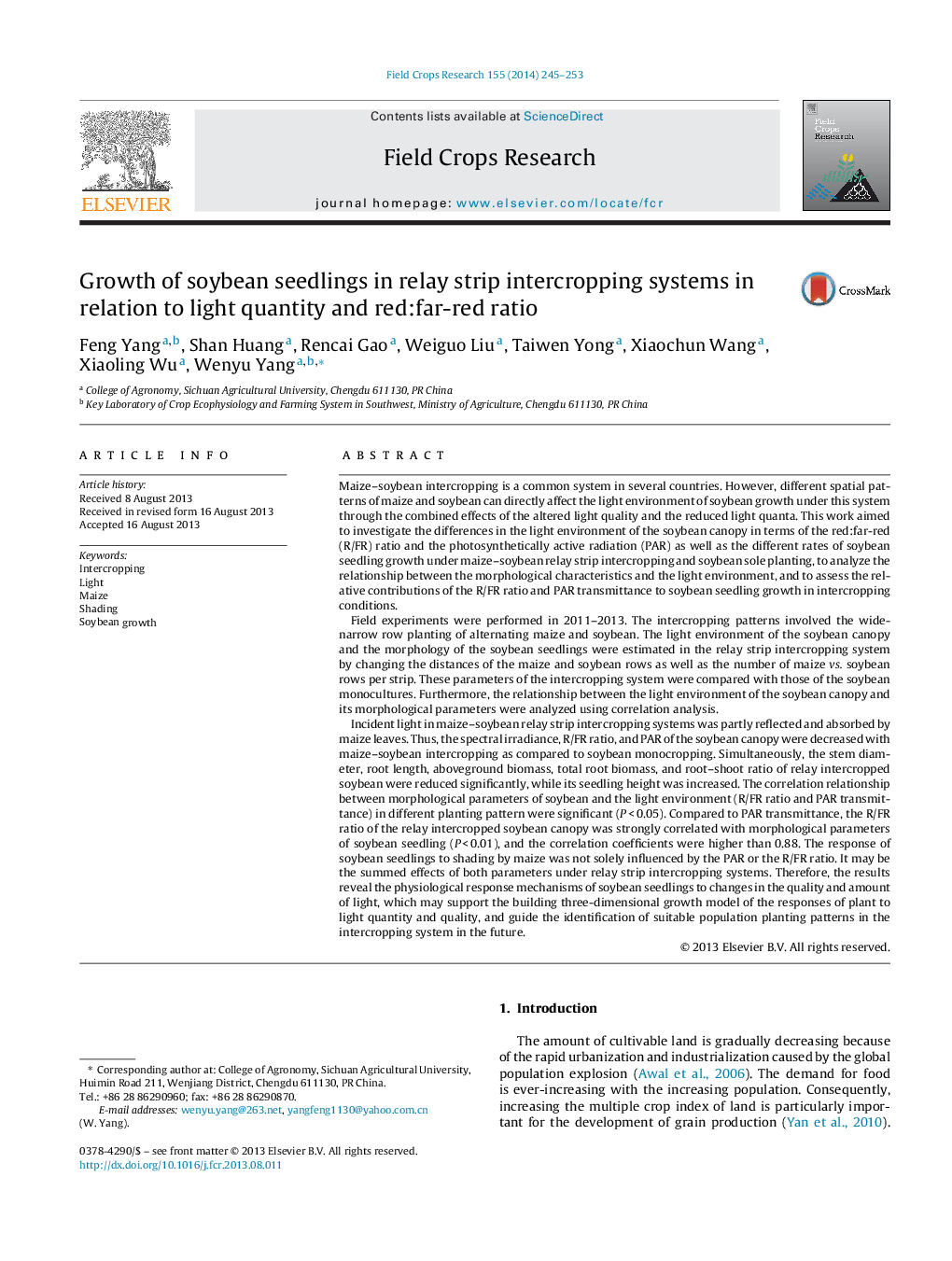| کد مقاله | کد نشریه | سال انتشار | مقاله انگلیسی | نسخه تمام متن |
|---|---|---|---|---|
| 6375098 | 1624708 | 2014 | 9 صفحه PDF | دانلود رایگان |
- The spectral irradiance, R/FR ratio, and PAR of the soybean canopy are decreased in maize-soybean relay intercropping conditions.
- Differential growth of soybean seedlings under relay strip intercropping systems with maize.
- Significant relationship of morphological parameters of soybean seedling with R/FR ratio and PAR transmittance.
Maize-soybean intercropping is a common system in several countries. However, different spatial patterns of maize and soybean can directly affect the light environment of soybean growth under this system through the combined effects of the altered light quality and the reduced light quanta. This work aimed to investigate the differences in the light environment of the soybean canopy in terms of the red:far-red (R/FR) ratio and the photosynthetically active radiation (PAR) as well as the different rates of soybean seedling growth under maize-soybean relay strip intercropping and soybean sole planting, to analyze the relationship between the morphological characteristics and the light environment, and to assess the relative contributions of the R/FR ratio and PAR transmittance to soybean seedling growth in intercropping conditions.Field experiments were performed in 2011-2013. The intercropping patterns involved the wide-narrow row planting of alternating maize and soybean. The light environment of the soybean canopy and the morphology of the soybean seedlings were estimated in the relay strip intercropping system by changing the distances of the maize and soybean rows as well as the number of maize vs. soybean rows per strip. These parameters of the intercropping system were compared with those of the soybean monocultures. Furthermore, the relationship between the light environment of the soybean canopy and its morphological parameters were analyzed using correlation analysis.Incident light in maize-soybean relay strip intercropping systems was partly reflected and absorbed by maize leaves. Thus, the spectral irradiance, R/FR ratio, and PAR of the soybean canopy were decreased with maize-soybean intercropping as compared to soybean monocropping. Simultaneously, the stem diameter, root length, aboveground biomass, total root biomass, and root-shoot ratio of relay intercropped soybean were reduced significantly, while its seedling height was increased. The correlation relationship between morphological parameters of soybean and the light environment (R/FR ratio and PAR transmittance) in different planting pattern were significant (PÂ <Â 0.05). Compared to PAR transmittance, the R/FR ratio of the relay intercropped soybean canopy was strongly correlated with morphological parameters of soybean seedling (PÂ <Â 0.01), and the correlation coefficients were higher than 0.88. The response of soybean seedlings to shading by maize was not solely influenced by the PAR or the R/FR ratio. It may be the summed effects of both parameters under relay strip intercropping systems. Therefore, the results reveal the physiological response mechanisms of soybean seedlings to changes in the quality and amount of light, which may support the building three-dimensional growth model of the responses of plant to light quantity and quality, and guide the identification of suitable population planting patterns in the intercropping system in the future.
Journal: Field Crops Research - Volume 155, January 2014, Pages 245-253
